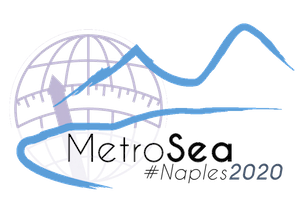Dal 5 al 7 ottobre 2020 si terrà il workshop "Metrology for the Sea", che quest''anno si svolgerà in modalità virtuale.
Nell'ambito delle sessioni speciali previste, vi segnaliamo la special session #7 dal titolo: "Measuring the sea: the contribution of marine geological research" (http://www.metrosea.org/special-session-7).
I contributi richiesti includono anche quelli che affrontano problematiche analitiche legate alle misurazioni di qualsiasi tipo sui sedimenti e che rappresentano di certo un aspetto fondamentale per la ricerca geologica.
I contributi sottomessi potranno essere poi pubblicati in un volume speciale di "Geosciences" riservato all'evento.
Per tutti i dettagli consultare il sito www.metrosea.org
SPECIAL SESSION #7: MEASURING THE SEA: THE CONTRIBUTION OF MARINE GEOLOGICAL RESEARCH
Marine geological researches achieved major results in the last decades thanks to remarkable technological advancements, particularly for remote-sensing observations (ship- or ROV/AUV-based) and seafloor sampling techniques, which presently allow for the recovery of undisturbed sediments sections at the seafloor. The field of application of such technologies is wide, ranging from thematic map compilation, to geological-geophysical-geochemical observations leading to natural and anthropic impact and risk mitigation, as well as for the preservation of cultural heritages. The common requirement of these studies is the need for high accuracy and resolution in carrying out measurements.
The session aims to receive and discuss contributions in the following topics:
- Digital Terrain Models and seabed morphology;
- Backscatter surveys;
- Surveys and sampling from autonomous vehicles (AUV);
- Survey techniques and data processing for seismic stratigraphy;
- Measurements on bottom sediments (core logs);
- Ocean Bottom Seismic (OBS) applications for monitoring the active geodynamic processes;
- Lidar and laser scanner techniques for coastal and shallow water surveys, including drone surveys;
- Radar measurements and web-cam application for gauging coastal dynamics;
- Numerical and physical modeling describing or simulating the evolution of the seabed in shallow and deep waters.
- Acquisition, processing and interpretation of analytical data from sediments
Organized by:
Luca Gasperini (CNR-ISMAR)
Ines Alberico (CNR-ISMAR)
Fabio Matano (CNR-ISMAR)
Donatella D. Insinga (CNR-ISMAR)
Maria Rosaria Senatore (UNIVERSITY OF SANNIO)

